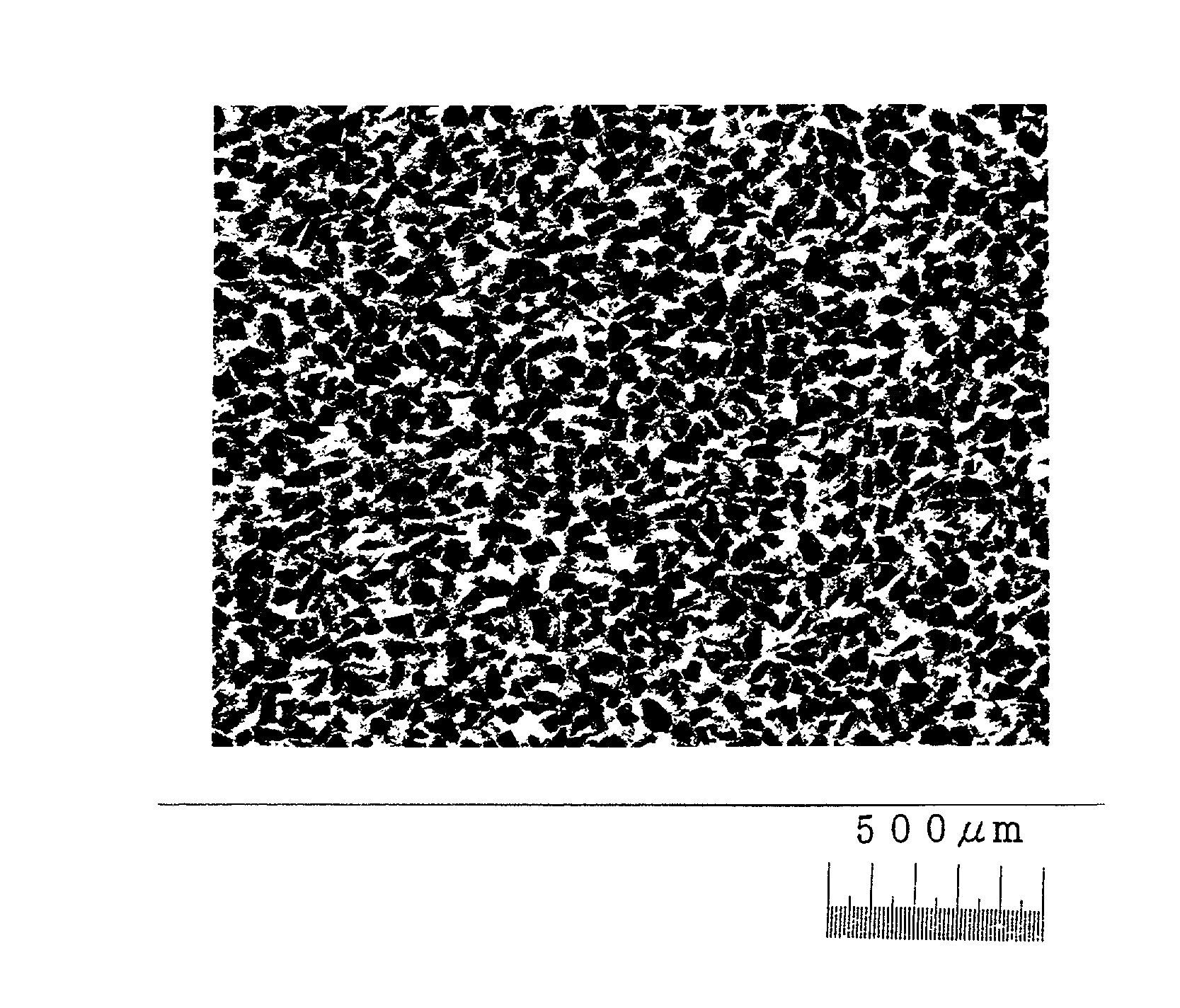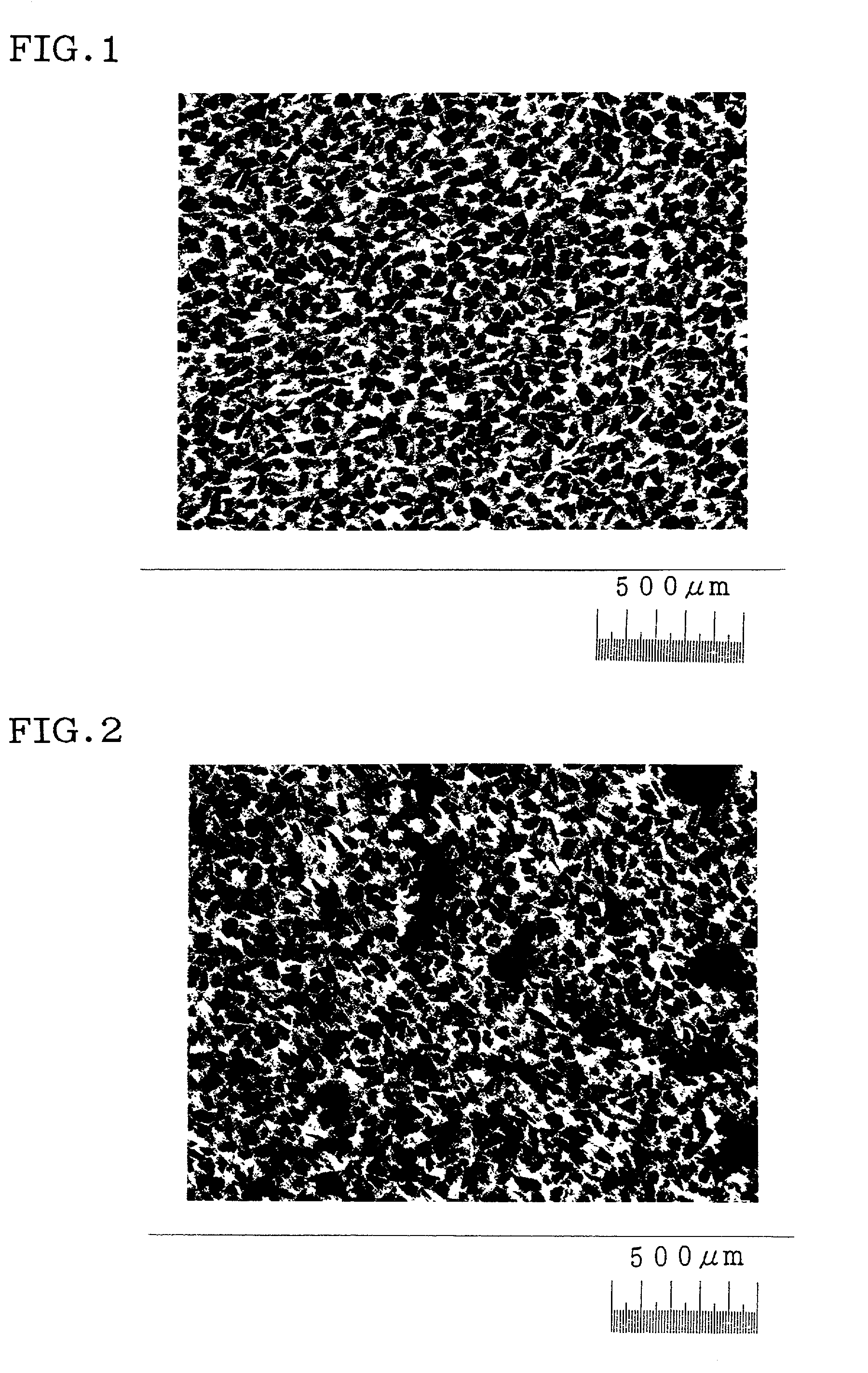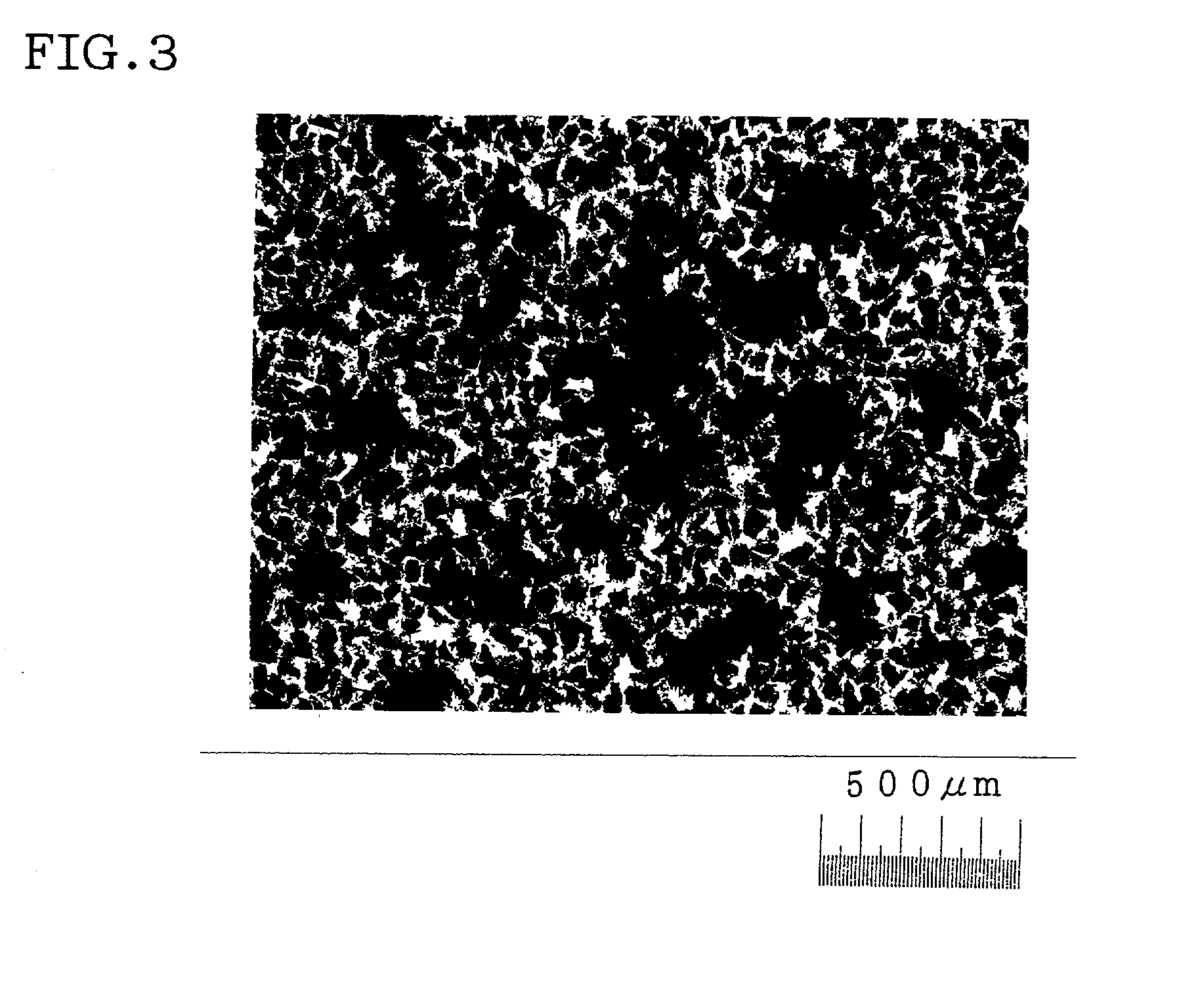Porous metal based composite material
a composite material and porous metal technology, applied in the direction of gearing, coatings, statators, etc., can solve the problems of difficult selection of foam materials for steel materials, difficult to provide an even structure, uneconomical powder metallurgy methods (1), etc., to achieve good thermal expansion coefficient, simple industrial application, and good economic
- Summary
- Abstract
- Description
- Claims
- Application Information
AI Technical Summary
Benefits of technology
Problems solved by technology
Method used
Image
Examples
example 1
[0033]Alumina particles that were Ni-plated at a thickness of 0.3 μm on the surface thereof and had an average particle size of 50 μm, and alumina particles that were not surface treated and had an average particle size of 50 μm were mixed at each ratio of 1:0, 2:1, 1:1 and 1:2. The fine particles were mixed at each of the ratios and filled in a graphite jig. Subsequently, pure aluminum A1050 (Al>99.5%) or aluminum alloy A5005 (Al-0.8Mg) was arranged on the particles, was melted, penetrated into the particle mixture without pressure, and was solidified, thus providing a sample composite material. The mechanical and physical characteristics of the sample are shown in Table 1. In Table 1, the degree of penetration was determined by whether or not molten matrix metal penetrated evenly through the thickness of the layer of the fine particles filled in the jig.
[0034]FIG. 1, FIG. 2 and FIG. 3 are optical microscopic photographs, showing typical microstructures. FIG. 1 is an optical micros...
example 2
[0036]Alumina particles that were Ni-plated at the thickness of 0.3 μm on the surface thereof had an average particle size of 50 μm, and alumina particles that were not surface treated and had an average particle size of 50 μm, were mixed at the ratio of 2:1. Dispersion particles were mixed at the ratio and filled in a graphite jig. Subsequently, pure aluminum A1050 (Al>99.5%) or aluminum-magnesium alloy (Al-0.18 to 2.308Mg) was arranged on the particles, melted, penetrated into the particle mixture without pressure, and was solidified, thus providing a sample composite material. The mechanical and physical characteristics of the sample are shown in Table 2. In Table 2, the degree of penetration was determined by whether or not molten matrix metal penetrated evenly to the degree of penetration was determined by whether or not molten metal penetrated evenly through the thickness of the layer of the dispersion particles filled in the jig.
[0037]
TABLE 2MixingratioPlatingof platedYoung's...
PUM
| Property | Measurement | Unit |
|---|---|---|
| size | aaaaa | aaaaa |
| particle size | aaaaa | aaaaa |
| particle size | aaaaa | aaaaa |
Abstract
Description
Claims
Application Information
 Login to View More
Login to View More - R&D
- Intellectual Property
- Life Sciences
- Materials
- Tech Scout
- Unparalleled Data Quality
- Higher Quality Content
- 60% Fewer Hallucinations
Browse by: Latest US Patents, China's latest patents, Technical Efficacy Thesaurus, Application Domain, Technology Topic, Popular Technical Reports.
© 2025 PatSnap. All rights reserved.Legal|Privacy policy|Modern Slavery Act Transparency Statement|Sitemap|About US| Contact US: help@patsnap.com



